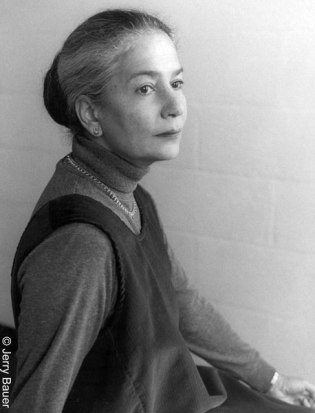Anita Desai’s latest volume, The Artist of Disappearance, consists of a trio of novellas set in
a changing Indian landscape. Dealing with themes of heritage, cultural
imperialism, and the desire for stability in a constantly evolving world, the
three novellas range from mundane everyday encounters to lifelong mysteries.
Ironically, the characters themselves, in their search for preservation, end up
participating unwittingly in the destruction of that which they seek to
preserve.
In the opening novella, “The Museum of Final Journeys,” a
government officer is sent to a small village for training. Going about his
daily duties in the misery of isolation, he learns of the Mukherjee estate
museum from the family’s servant. Started by Srimata Sarita Mukherjee, the
collection houses exotic items sent home by the Srimata’s youngest son, Sri
Jiban, from his voyages to the East: Japanese fans and kimonos, Chinese
figurines, anonymous treasures of unknown value. Though the family was once the
richest in town, the estate has now fallen into disrepair, the lifeless objects
locked behind glass cases with no visitors. “The sleeves were empty, the hems
ended in no slippers and no feet. Their fans stirred no air.” The final
treasure, a chained elephant, lies in the backyard in a thicket of bamboo,
posing a significant financial burden on the estate. Considering that elephants
are often associated with wisdom and memory, the elephant here creates a
paradox: the museum and collection, relics that represent not just the past of their
respective cultures but also the memory of Sri Jiban, must be sacrificed in
order to continue feeding the elephant, itself a symbol of memory.
In all honesty, “Museum” left me a little bemused. Desai’s
language at times turns unnecessarily flowery; for example, the opening
sentence reads: “We had driven for never-ending miles along what seemed to be
more a mudbank than a road between fields of virulent green -- jute? rice? what
was it this benighted hinterland produced?” Perhaps this enhances the effect,
as the officer seems to be characterized as a somewhat pretentious character;
however, I found it off-putting, and felt rather unsympathetic towards him
(though part of me believes that may have been Desai’s intention). I much
preferred the second novella, “Translator Translated,” which concerns a
literature professor named Prema, who takes on the task of translating the
writer Suvarna Devi’s short stories from the indigenous Indian language Oriya
into English.
As she undergoes this task, Prema discovers that the
languages of Oriya cannot easily be translated, the words in English sounding
flat, lacking the elegance of the original. “I was only the conduit, the medium
between that language and this -- but I was the one doing the selecting, the
discriminating, and I was the only one who could; the writer herself could not.
I was interpreting the text for her because I had the power.” Prema attends a
promotional press conference where she is confronted with the question of
cultural imperialism head-on when a critic accuses her of “destroying the
original language” in order to appeal to a Western audience. Desai cleverly
uses this opportunity to make a subtle critique of the world of academia; the
participants are soon throwing words around like “subaltern, discourse, reify,
validate,” which Prema cannot understand despite her education.

When Prema begins translating Suvarna Devi’s latest novel,
which she finds to be disappointing even in the original, she must choose
between creating an accurate translation or preserving Devi’s reputation,
“which [she] had worked hard to establish,” by rewriting the text to liven it
up. Prema’s dilemma raises complicated issues concerning the role of
translation in preserving native texts: she wants to remain
faithful to the original language, but how can she promote Devi’s work and the
importance of Oriya writers if no one will enjoy it? Desai seems uncertain as
well, switching between first and third person at random, a narrative choice that
is quite jarring at first. Perhaps like Prema, she too cannot decide whether to
stick to the objective truth or insert a subjective voice.
The final novella, “The Artist of Disappearance,” follows a
man named Ravi from childhood into his adult life as he lives reclusively in
the Himalayas. Surviving a series of tragedies including the death of his
parents and his mother’s old English nurse, Ravi chooses to live alone in the
burned-out hull of his childhood home, surrounded by wild nature. “Outdoors was
freedom” for him, unconstrained by the mores of British society or Indian
culture; he expresses his freedom by transforming a secluded glade into an
elaborate rock garden, hidden from the outside world.
But Ravi’s world is interrupted by a film crew making a TV
documentary about environmental degradation, who stumble across his grove.
Shalini, the producer’s assistant, suggests that the grove can be used as an
uplifting note to conclude the documentary, a hint of hope for the preservation
of nature to counterbalance the destruction of the logging and mining
industries. To Ravi, however, “their gaze alone was desecration.” Here Desai
presents a conflict of interests between Ravi’s desire to control his own life,
to organize his surroundings into beauty, and the film crew’s assignment to
document the destruction of the very nature that Ravi strives to preserve.
Desai consistently shows a keen awareness of the hypocrisies
and pretenses her characters tend to exhibit; like Prema, the character Bhatia
from the film crew is more concerned with his own self-serving interests, even
while he is ostensibly committed to a larger goal. However, “Artist” is the
clear standout piece in the collection. “Museum” and “Translator” fell a little
flat for me -- perhaps it was the unsatisfying conclusions they both had, or
that I felt that the officer and Prema both had more or less “right” solutions
to their problems. On the other hand, the central conflict in “Artist” was much
more ambiguous, as it wasn’t necessarily a conflict between right and wrong,
but rather between two parties with their own distinct motivations. Further,
the prose in “Artist” is in my opinion the most polished; it is neither
unnecessarily verbose as in “Museum” nor as confusing as the switching between
first and third person in “Translator.” Rather, it is almost cinematic in
scope, while retaining the introspective quality that Desai employs quite adeptly,
to create a story that continues to haunt me long after I finished reading.
Eric Zhang has a background in Asian American studies, art, and
visual culture. He currently lives in New York, where he works at NYU
and MOCA.









Comments